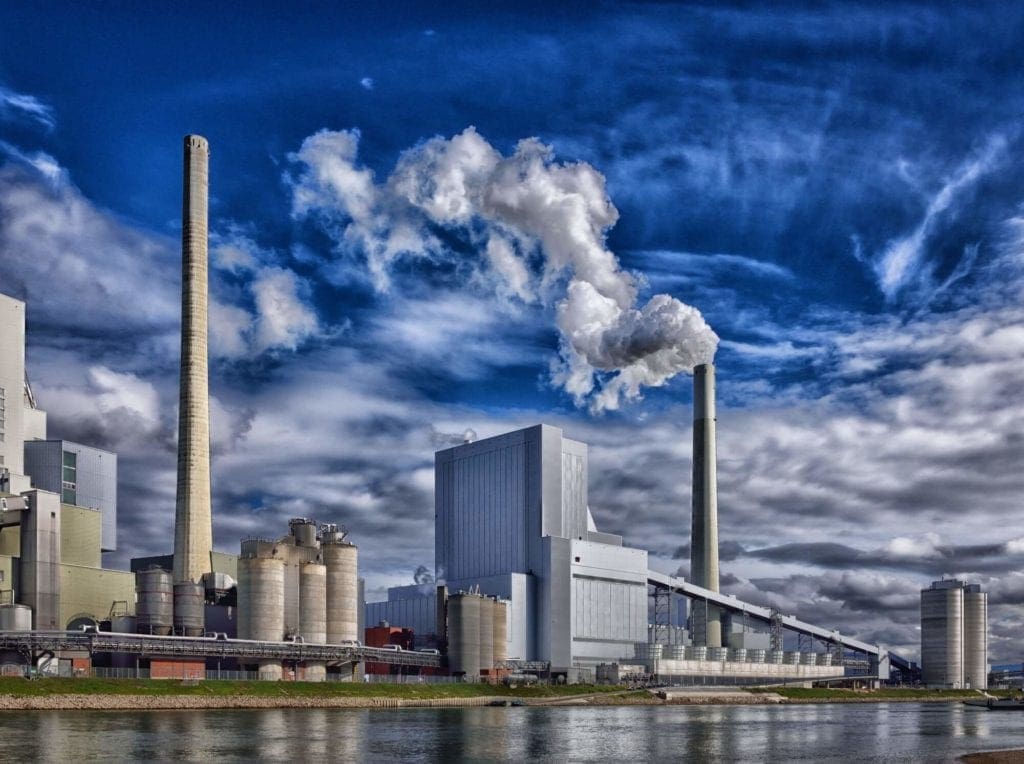There’s a bit of a joke going around on the internet right now. It’s a bit of a play on the false story of dolphins swimming in the Venice canals and the elephants taking over a town in China.

The premise of the joke is that now that humans must stay indoors, nature is healing itself. Each post usually includes a bizarre picture, like Byrd scooters in the Mississippi River or dinosaurs photoshopped into Times Square in New York.
A bit of light humor is what many of us need during these times, but is there any truth behind the sentiment that “we are the virus”?
The environmental impact of COVID-19 is real, but it’s unlikely to stick – unless we use this time to create huge, structural change.
COVID-19 Prompted a Drop in Emissions
While there are no swans in Venice and no dinosaurs in Times Square, some improvements are real. Because everyone is staying home and manufacturing is down, our greenhouse gas emissions are also dropping. Air quality has also gone up.
A look at the satellite imagery of pollution in China is amazing, and one expert called it the “largest-scale experiment ever” in terms of emission reduction.
But the head of the United Nations Environment Programme (UNEP) says, “not so fast.” Yes, the pandemic has brought the modern mode of life to a halt, but he believes that these improvements in the environment are temporary.
Why?
Because we are only seeing positive impacts on the environment because humans are in distress and our economies are in turmoil. What’s happening right now isn’t normal: it’s a crisis. If we go back to “normal,” the same pollution and emissions will come roaring back.
What COVID-19 Has Taught Us About Pollution
The vast majority of people can acknowledge pollution is bad – at least on the surface. But the COVID-19 pandemic has also reinforced just how dangerous pollution is for all forms of life – both us and the planet.
A study published during the first week of April found that death rates are higher where air pollution is abundant. The research occurred in the U.S., and it found that if Manhattan had only slightly cleaner air, more people who contract the virus would live. Similar findings are reflected in a report from Italy that found people living in the north who experienced more air pollution say higher levels of death.
Some of this knowledge isn’t new: it’s already well understood that toxic air increases the risk of respiratory diseases as well as acute respiratory distress syndrome. Acute respiratory distress syndrome is a cause of many COVID-19 deaths.
In other words, ensuring cleaner air now and in the future will reduce the number of deaths from COVID-19 as well as other viruses that impact respiratory systems.
Unfortunately, there’s more. The World Health Organization (WHO) is also investigating whether air pollution particles are also a vector that carries the disease and makes it more powerful.
We Can See Greater Environmental Impact Through Green Rescue Plans
Unfortunately, a few months (or a year) of reduced emissions won’t mean much for the climate crisis we’re facing. In the grand scheme of things, it will be a blip on the radar. But it doesn’t have to be.
Now that we have a glimpse of what the world could look like without fossil fuels, we can see that it’s possible to make huge changes. The way we sustain is after this crisis is over is by ensuring that any recovery plans are green.
Any bailouts and recovery plans must acknowledge new truths: we have to rebuild, and it’s a prime opportunity to rebuild a sustainable future free from fossil fuels and excess. It’s time to find a way to prop up economies without funneling money to groups whose long- and short-term futures are already threatened by climate change. That means not buying bonds from oil companies and being wary of how we invest in airlines.
Campaigners face an uphill battle. China and Poland say that it’s better to recover the economy at any cost and worry about the climate later. In the U.S., the current administration is hostile to climate science. The White House even floated the idea of providing federal aid for oil and gas.
Even when supporting businesses like airlines, the funding should come with stipulations, like taking concrete actions to reduce emissions and committing to carbon goals.
Ultimately, states have an unprecedented opportunity to play a huge role in the shaping of the economy, and if they take the opportunity, governments could make the 2030 goals achievable with less effort.
What Comes Next Is Up to Us
Even in time as uncertain as this one, there’s one thing we do know: more crises are coming. Whether it’s a new pandemic, a complete economic meltdown, or the collapse of our environment, these crises will grow larger and larger. Unless we do something about the economic model that contributes to them, things will grow out of human control.
It’s time now to understand that using the Earth’s resources faster than we can restore them will ultimately result in a disaster that we will be increasingly less able to recover from.
The environmental impact of COVID-19 shows that a concentrated effort can make a difference almost overnight. But to protect our future, the difference needs to be sustained. And now is as good a time as any to start building sustainable systems.
Keep reading our blog for more environmental insights.


